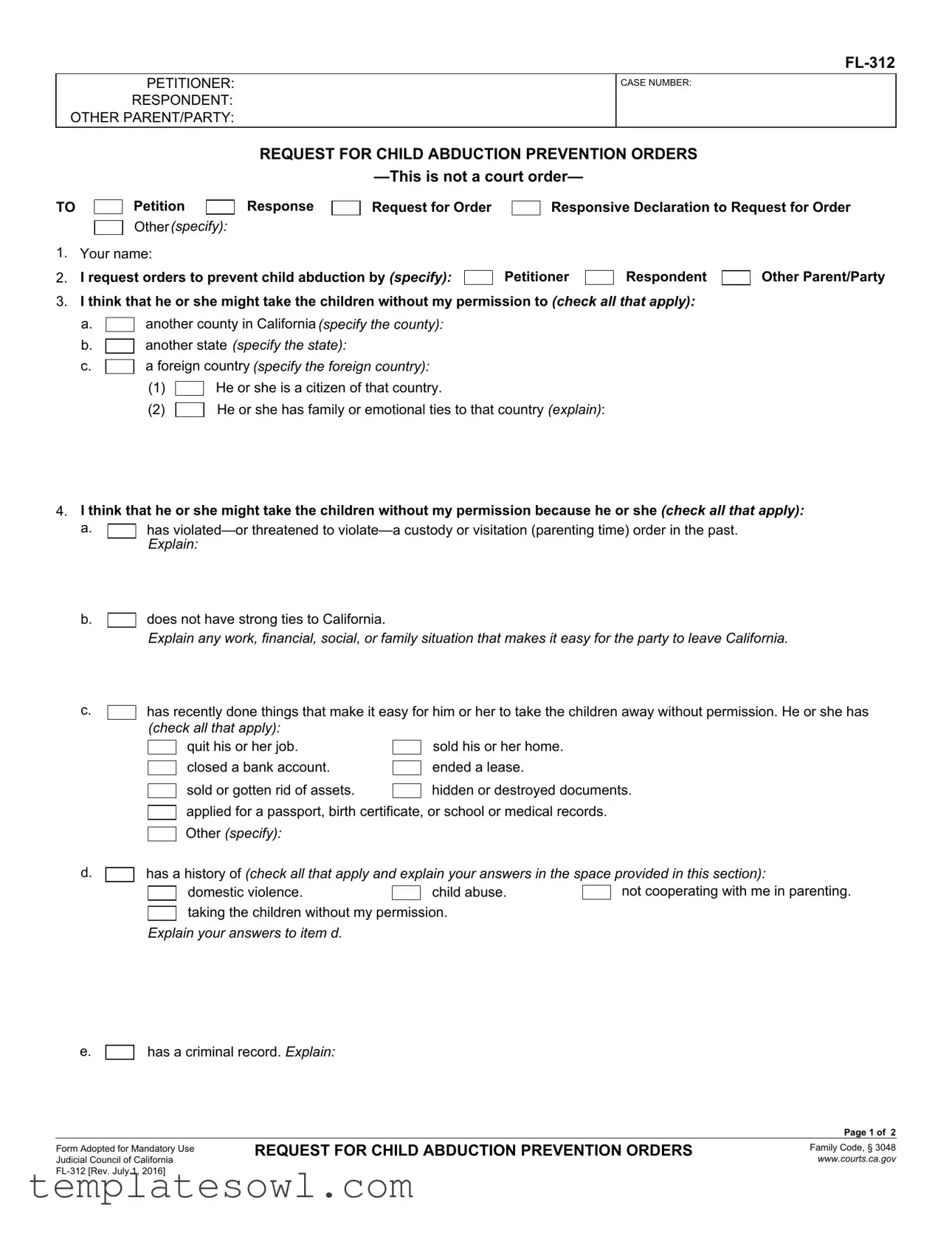What is the FL-312 form?
The FL-312 form is a legal document used in California to request orders that prevent child abduction. This form allows a person to express concerns about a parent or guardian potentially taking children without permission. It contains sections to explain the reasons for the request and any relevant history that may support the request for protection.
Who can use the FL-312 form?
This form can be used by any parent or guardian who has custody or visitation rights and is concerned that the other parent may take the children away without permission. It is intended for situations where there is a real fear of abduction or relocation that could harm the children’s well-being.
What information do I need to provide on the FL-312 form?
When filling out the FL-312 form, you need to provide details about yourself, the other parent, and the children involved. You will also need to explain why you believe the other parent might take the children without consent. It's important to include any evidence of past behavior related to abduction, such as history of domestic violence or child abuse.
What types of requests can I make with the FL-312 form?
You can request various types of orders to prevent child abduction. This includes asking the court to prevent the other parent from moving out of the state, traveling with the children without permission, or applying for passports or other vital documents. Additionally, you might ask for supervised visitation to ensure the children are safe during visits.
How does the court process my FL-312 request?
After you submit the FL-312 form, the court will review your request. A hearing may be scheduled where both parents can present their cases. You will need to provide evidence to support your claims. Based on the information presented, the judge will make a decision regarding the requested orders.
What happens if the court grants my request?
If the court grants your request, it will issue orders that the other parent must follow. These orders can include restrictions on travel, visitation conditions, and requirements related to passports and other legal documents. Violating these orders may have serious legal consequences for the other parent.
What can I do if I believe my child is at immediate risk of abduction?
If you think your child is in immediate danger of being abducted, you should seek help right away. This can include contacting local law enforcement, filing an emergency application with the court, or finding legal assistance. Immediate action is vital to protect your child's safety.
Can I modify the orders made under the FL-312 form?
Where can I find more information about the FL-312 form?
For more details and guidance on the FL-312 form, you can visit the official California courts website. Additionally, legal assistance is available through local family law attorneys who can help you navigate the process and answer specific questions related to your case.


